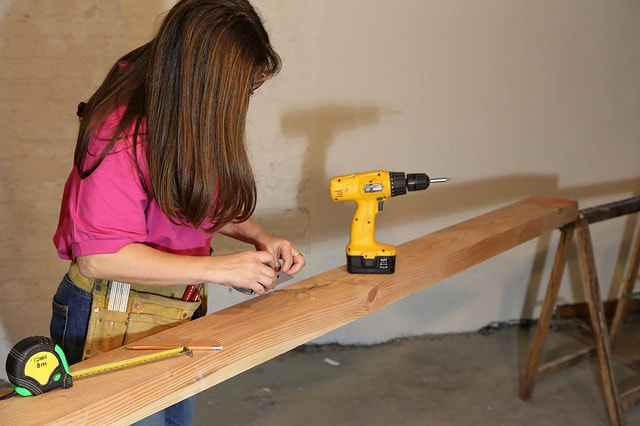Fortunately, most of these injuries can be prevented with the proper safety precautions and measures. Certainly, understanding risks and learning ways to prevent eye injuries during home improvement projects will help protect your eyes and your vision. So with that, let’s look at some common causes of eye injuries and how to prevent them. Common Causes of Eye Injuries During Home Improvement ProjectsWhether you’re involved in home projects, such as building a deck, remodeling your kitchen, painting, or improving your backyard, eye safety is vital. One reason why eye injuries at home are common is that the materials involved in many home improvement projects can be hazardous to our eyes. Some common hazards that can cause eye injuries include:
Decreasing Your Risk of Eye Injuries During Home Improvement ProjectsBefore you start a home improvement project, think about risks and ways you can protect your eyes and prevent injury. Consider the following suggestions:
Using Protective EyewearIn addition to the tips listed above, using appropriate protective eyewear when completing home improvement projects is one of the best ways to decrease your chances of an eye injury. Use protective eyewear when completing home projects involving pouring cement, chipping, and sawing. Safety glasses or goggles should also be used when working with chemicals, using a nail gun, and doing yard work. According to the American Academy of Ophthalmology (AAO), only about one-third of people in the United States use protective eyewear when doing a project where there is a risk of eye injury. But the AAO estimates that wearing protective eyewear can decrease your risk of injury by about 90 percent. Please keep in mind that if you wear regular glasses, they do not protect your eyes from flying debris. Lenses made of plastic and glass can shatter if something hits the lens. Instead, wear a pair of safety glasses or goggles that are made from polycarbonate lenses. Polycarbonate lenses are usually lightweight, so they are not cumbersome to use when working. Plus, they are impact and scratch resistant to prevent injury. Make sure your safety glasses or goggles fit right. Your glasses or goggles should be comfortable, but fit closely to your face. The right fit prevents gaps where debris could get through. Glasses that have side shields or that wrap around are good options. When choosing protective eyewear for home improvement projects, check the lens and make sure it’s marked “ANSI Z87.1.” This marking indicates the lens meets the safety standards set by the American National Standards Institute. Not sure whether to wear safety glasses or goggles for a particular home improvement project or activity? When in doubt about the risks to your eyes and whether you should or shouldn’t wear protective eye wear, it’s always best to air on the side of caution and protect your eyes with safety glasses or goggles. What to Do in Case of an Eye Injury at HomeIt’s important to do everything you can to protect your eyes when working on home projects. Even if you do your best though, accidents can still happen. Knowing what to do in case of an injury can prevent permanent damage to your eyes.
Eye injuries at home often include either a foreign body in the eye or a foreign body penetrating the eye. If you sustain an injury involving a foreign body penetrating the eye, seek medical attention immediately. Do not apply pressure to the eye or try to remove the object, as these can cause further injury. If you get a chemicals splash in your eye, irrigate it with water immediately. Allow water to run over the affected eye for 20 minutes. If possible, have someone else call your eye doctor while you are irrigating the eye and ask for an appointment. Bring the chemical container with you for your eye appointment. For less severe injuries, such as a foreign body in the eye, it’s still important to see an ophthalmologist as soon as possible. Avoid rubbing your eyes, which can lead to a corneal abrasion. If you have any questions about keeping your eyes protected during home improvement projects or would like to schedule an appointment to check your eyes, please call our office at 508-746-8600. Our staff is here and happy to assist you. Thanks for reading! Please check out our next post, “Common Causes of Eye Injuries at Home & How to Protect Yourself,” as we continue with Home Eye Safety Month and Eye Injury Prevention Month. Comments are closed.
|
EYE HEALTH BLOGCategories
All
Archives
July 2024
|
|
Kadrmas Eye Care New England
55 Commerce Way, Plymouth, MA 02360
14 Tobey Road, Wareham, MA 02571 133 Falmouth Road (Rt 28), Mashpee, MA 02649 |
Phone Number:
1-508-746-8600 Hours: Monday through Friday — 8 AM – 4:30 PM |


 RSS Feed
RSS Feed
